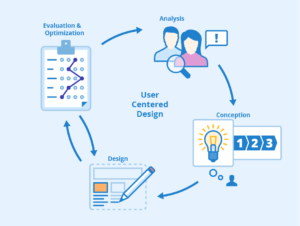Decoding the 417 Expectation Failed Error: Causes and Solutions – Your Comprehensive Guide

Decoding the 417 Expectation Failed Error Causes and Solutions - Your Comprehensive Guide
Introduction
In the vast digital landscape of the internet, error codes serve as navigational cues that guide us through the complexities of online interactions. Among these codes, the “417 Expectation Failed” error stands as an indication that the server cannot fulfill the expectations set by the client in the request’s “Expect” header. In this comprehensive guide, we’ll dive into the intricacies of the 417 error, explore its underlying causes, and provide you with a step-by-step guide to effectively troubleshoot and resolve it.
Understanding the 417 Expectation Failed Error
The “417 Expectation Failed” error is an HTTP status code that is triggered when the server cannot meet the “Expect” header’s requirements in the client’s request. The “Expect” header is used by clients to indicate specific behaviors or conditions they expect the server to follow when processing the request.
Common Reasons for the 417 Error
- Unmet Expectations:The primary cause of a 417 error is when the server cannot fulfill the specific expectations communicated by the “Expect” header in the request.
- Unsupported or Misunderstood Expectations:If the server does not support or understand the expectations communicated by the “Expect” header, it can lead to the error.
Resolving the 417 Expectation Failed Error: Step-by-Step Guide
- Check “Expect” Header:Review the “Expect” header in your request to ensure that the expectations you’re communicating are valid and supported by the server.
- Remove “Expect” Header:If you’re unsure about the “Expect” header’s usage or if it’s unnecessary, consider removing it from your request.
- Consult API Documentation:If you’re working with APIs, refer to the API documentation to understand how to correctly use the “Expect” header and what expectations are supported.
- Update Code:If you’re a developer, review your code to ensure that you’re correctly constructing the “Expect” header and setting appropriate expectations.
- Use Default Expectations:If you’re uncertain about the appropriate expectations, omit the “Expect” header to allow the server to proceed with default behaviors.
- Inspect Server Response:Analyze the server’s response headers for additional details about why the expectations were not met.
- Use a Different Request Method:If the error persists, try using a different HTTP request method to see if the server can fulfill the expectations with a different approach.
- Contact Support:If the error continues despite your efforts, reach out to the website’s support team or your server administrator for assistance.
Conclusion
While encountering the 417 Expectation Failed error might appear perplexing, understanding its origins and potential solutions empowers you to address it effectively. Whether it’s about checking “Expect” headers, consulting API documentation, or using alternate request methods, this guide equips you to navigate through the intricacies of client-server expectations with confidence. Remember, attention to detail and a systematic approach are key to resolving the 417 error and ensuring harmonious communication within your online interactions.
For More Related Articles Browse Our Website Blogster.pk
For social Connection You can also Visit and follow our Social media Platforms
Facebook , Instagram, Linkedin, Pinterest, Quora, Twitter, Youtube.





